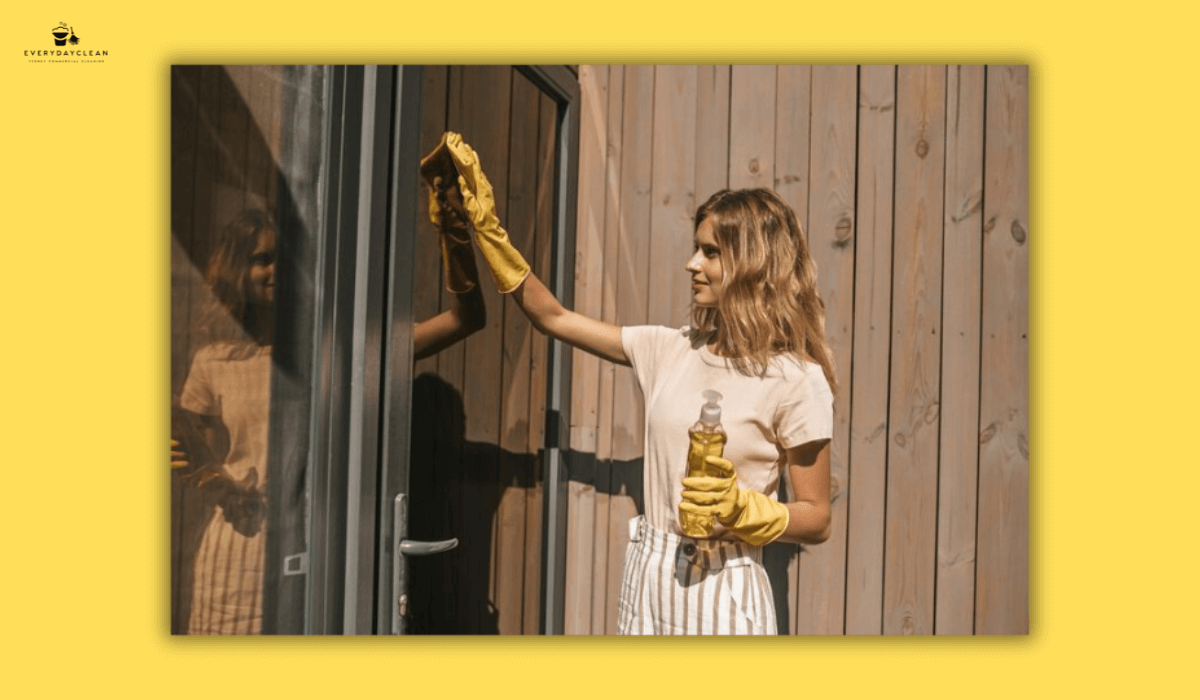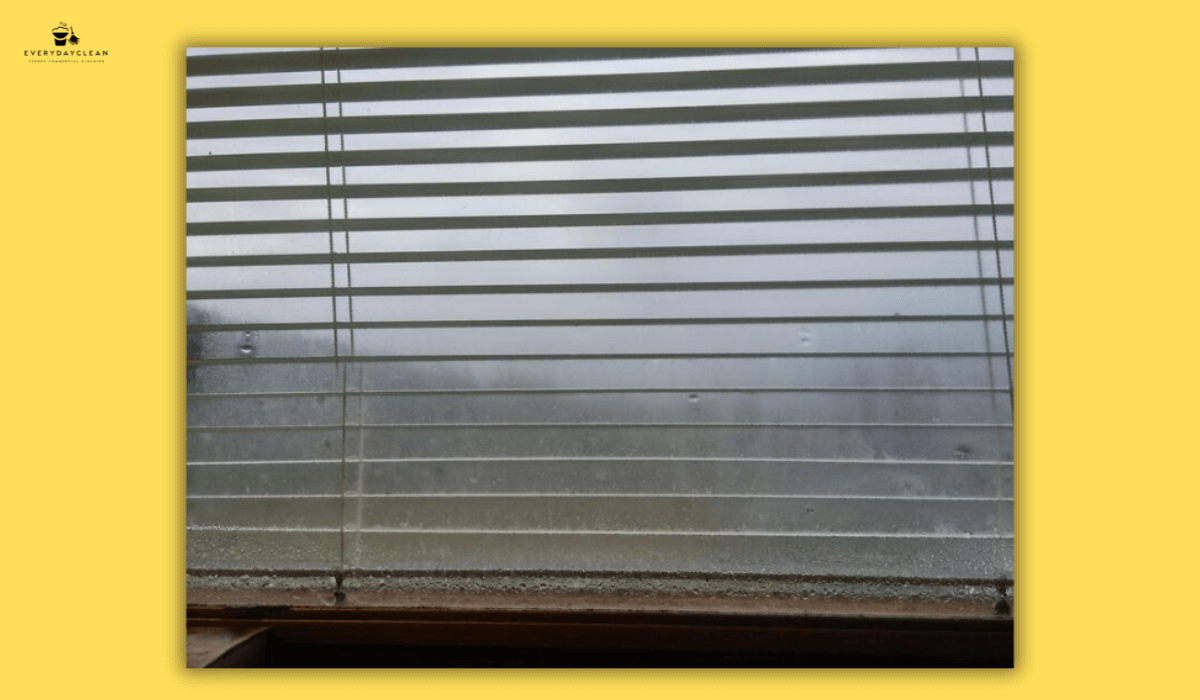10 Essential Window Cleaning Equipment Checklist
To clean glass efficiently and achieve a clear, streak-free finish, using the right window cleaning equipment is essential. A complete setup typically includes a squeegee, scrubber or washer, bucket, microfiber cloths, and a cleaning solution, either a commercial glass cleaner or a simple DIY mix of vinegar and water. For high or hard-to-reach windows, an extension pole helps maintain safety and precision, while a scraper tackles paint, grime, or tough debris.
This guide breaks down the most effective tools for residential, office cleaning services, and commercial cleaning services, explaining how each piece of equipment works together to keep glass spotless and frames protected.
Essential Window Cleaning Equipment Checklist
Every efficient window cleaning setup follows the same principle: wet, lift, wipe, and finish. Each tool in this list supports one of those stages to ensure that dirt is removed without scratching and that glass dries perfectly clear.
1. Window Bucket (Rectangular, 12–15L)
A wide, rectangular bucket allows washers and applicators to be fully submerged without bending. Professionals prefer sturdy, flat-bottom designs because they prevent tipping during movement and keep detergent cleaner for longer. Buckets also reduce waste, fewer solution spills, and tools can be rinsed effectively between pans.
2. Window Washer or Applicator (T-Bar + Sleeve)
This tool wets the glass and loosens grime before wiping. Microfiber sleeves hold more liquid than traditional sponges and evenly distribute the solution. They also reduce friction, preventing scratches while helping detergent penetrate dust, fingerprints, and grease. A snug sleeve fit ensures maximum coverage on every pass.
3. Professional Squeegee with Replaceable Rubber
The squeegee is the defining piece of window cleaning equipment. A sharp, straight rubber edge removes water in a single sweep, leaving no streaks. Professionals replace rubber blades frequently, as even slight wear causes drag marks. Stainless steel or aluminium channels last longest and glide smoothly, especially when paired with quality cleaning solutions.
4. Microfiber Detailing Cloths
Microfiber cloths complete the cleaning process by removing residual droplets along edges and sills. They absorb moisture quickly and leave zero lint behind. Use one damp cloth for cleaning and another dry one for final buffing. This prevents streaking and keeps the glass reflective.
5. Extension Pole (2–4 Sections)
Extension poles make high window cleaning safe and accessible without ladders. Choose lightweight, telescopic poles with secure locking systems. Standard cone fittings can hold most squeegees and washers. For two-storey buildings, carbon fibre or hybrid poles provide strength without extra weight.
6. Scraper with Stainless Steel Blades
Scrapers remove stubborn residues like paint, adhesive, or dried grime that regular tools can’t lift. Always use the scraper on wet glass to avoid scratches. Replace blades regularly and store them safely with covers to prevent rust or injury.
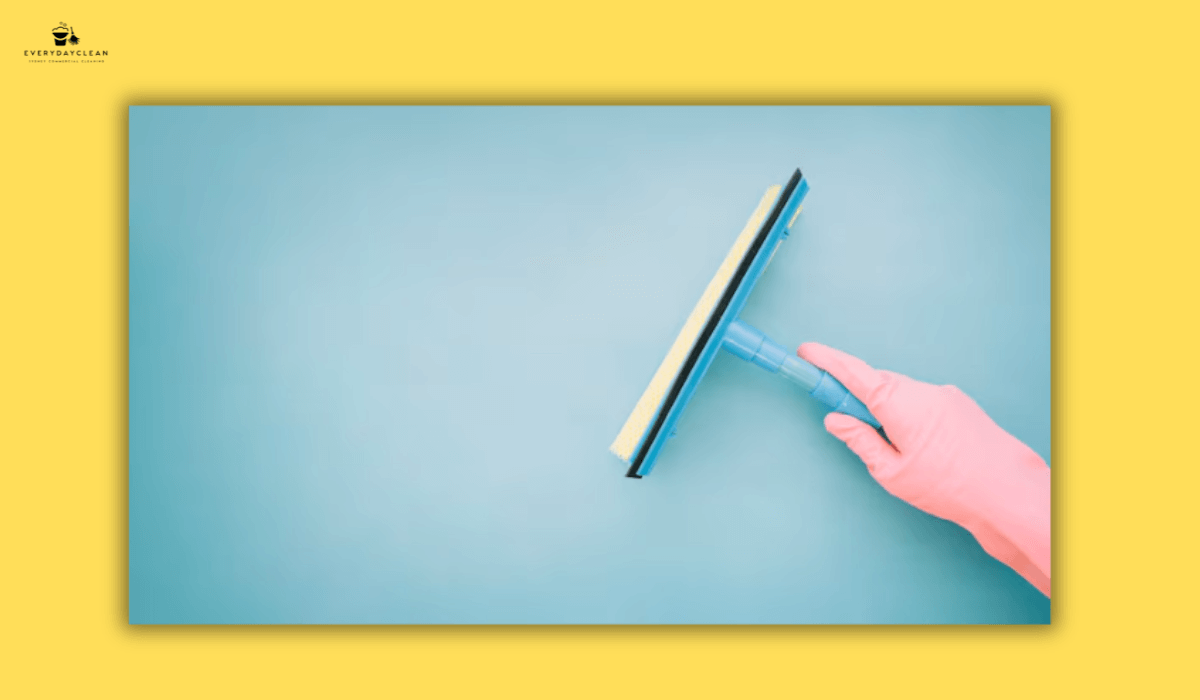
7. Cleaning Solution or Detergent (pH-Neutral)
A mild, pH-balanced detergent ensures clean, film-free glass. A common mix is one teaspoon of detergent in five litres of water. For eco-friendly jobs, vinegar and warm water are effective alternatives that cut grease naturally. The key is rinseability—solutions that dry cleanly reduce post-wipe labour.
8. Tool Belt or Bucket-On-A-Belt
Efficiency matters in professional cleaning. A tool belt keeps the squeegee, washer, and cloths within easy reach, preventing wasted trips to the bucket. It’s essential for commercial cleaners who cover multiple panes quickly and need to switch tools seamlessly.
9. Safety Gear (Gloves, Non-Slip Shoes, Step Stool)
Cleaning safety starts with a stable footing. Non-slip shoes and gloves provide grip and protection from chemicals. For indoor jobs, a small step stool replaces full ladders and improves ergonomics, preventing strain or overreach.
10. Optional: Water-Fed Pole System
For large exteriors or high façades, water-fed poles deliver purified water through a brush head, rinsing glass without detergent. This technology eliminates streaks entirely because pure water dries spotless. Although an investment, it’s a valuable upgrade for commercial and high-rise cleaning operations.
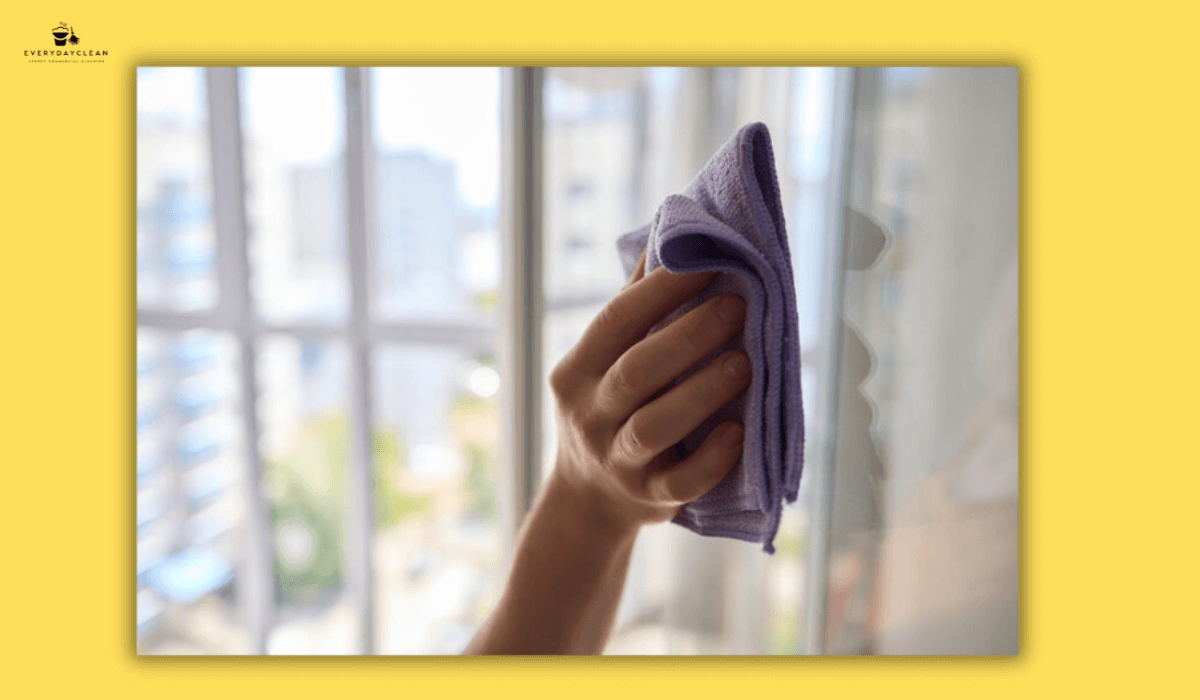
How to Choose Window Cleaning Equipment That Works
Selecting window cleaning equipment should always begin with the surface and soil type—not the brand name. The right tool makes the process more efficient, conserves detergent, and ensures lasting results.
Start by matching equipment to the glass and environment. Aluminium frames often gather fine dust and salt residue, requiring gentle but thorough scrubbing - especially when applying the best way to clean outside windows using tools designed for streak-free results.
Then, prioritise the squeegee’s quality. Cheap plastic handles and uneven rubber edges cause streaks and take longer to clean. Professional-grade tools - such as those from Unger, Ettore, or Moerman—provide precision, balance, and replaceable parts, allowing consistent performance.
Lastly, consider safety and maintenance. A pole that locks firmly prevents mid-stroke twisting. A well-balanced bucket reduces spills. Durable tools cleaned and dried after every job last longer and maintain their performance across hundreds of panes.
Maintaining and Storing Window Cleaning Equipment
Clean equipment equals clean glass. After each use, rinse all washable parts, sleeves, cloths, squeegees, and buckets with warm water. Residual detergent or grime can harden and cause streaks the next time you clean. Washer sleeves should be air-dried to avoid mould, while rubber squeegee blades should be wiped and stored flat to maintain a straight edge.
Never mix microfiber cloths with regular laundry, as lint clogs the fibres. Keep scrapers retracted and dry to prevent rust. Extension poles should be collapsed and wiped after outdoor work to remove salt and dust, especially in coastal regions. By maintaining each item properly, cleaners reduce waste, prevent equipment failure, and deliver professional results every time.
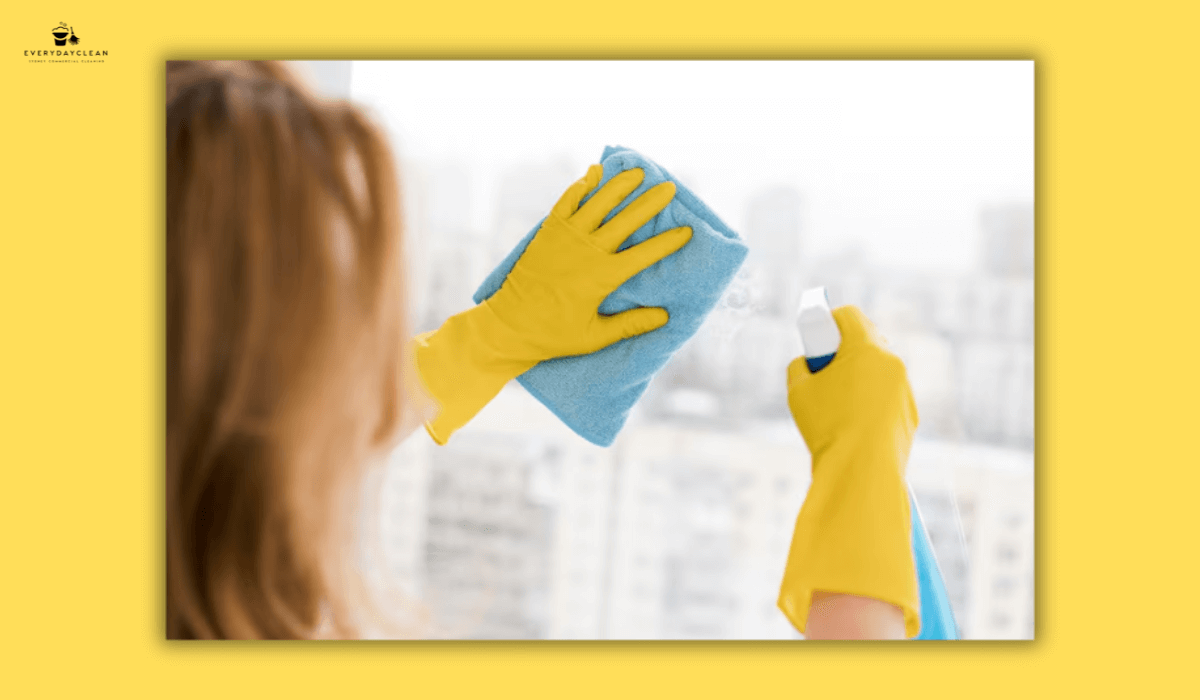
FAQs About Window Cleaning Equipment
Before looking at specific questions, it’s important to note that effective window cleaning depends on matching the right tool to the job—height, glass type, and soil level. The following answers address the most common concerns from homeowners and professional cleaners alike.
What equipment do professional window cleaners use?
Professional window cleaners rely on a combination of precision tools designed for speed and quality. Their standard kit includes a bucket, washer, squeegee, detailing cloths, scraper, and extension pole. Many also use belts for on-body storage and carry spare rubbers to replace them on-site. For larger properties, water-fed poles are becoming the standard for exterior jobs due to safety and efficiency. The focus is always on cleaning performance with minimal streaking and downtime.
What is the best squeegee for streak-free windows?
The best squeegee is one with a high-quality rubber blade and a straight channel. Brands like Unger and Ettore are widely trusted in Australia for their durable build and smooth glide. The blade should be replaced as soon as it leaves faint lines. Fresh rubber ensures an even pull that removes water completely. When paired with a balanced handle and the correct detergent ratio, a professional squeegee achieves a spotless finish in one motion.
Do window cleaning poles replace ladders?
For most low- to mid-height windows, yes. Extension poles allow cleaners to reach higher panes without risking ladder falls. They’re safer, faster, and often more cost-effective. However, some architectural designs or recessed frames still require close access. In those cases, a combination of a stable step and a pole is ideal. For multi-storey exteriors, pure-water systems using long carbon poles deliver the safest and most professional results.
How much does a window cleaning equipment kit cost?
A standard professional kit suitable for both residential and small commercial jobs costs between $150 and $350 in Australia. This includes a washer, two squeegees, spare rubbers, cloths, a scraper, and a mid-length pole. Adding a water-fed system can raise costs to $600 or more, but pays off in reduced time and superior finish quality. High-end equipment lasts longer, performs better, and ultimately saves on labour costs.
What safety equipment should be used when cleaning windows?
Safety gear varies by environment. For indoor and ground-level work, non-slip footwear, gloves, and a small step stool are sufficient. For exterior or elevated cleaning, harnesses, stabilisers, and helmet protection may be required, depending on building regulations. The priority is stability, secure footing, and safe tool handling prevent most accidents before they start.
Final Thoughts on Window Cleaning Equipment
A spotless window isn’t just about the detergent. It’s about precision tools and correct technique. The right window cleaning equipment makes all the difference: squeegees ensure clarity, microfiber cloths handle detail, and well-maintained poles improve safety and efficiency.
For Sydney homeowners, facility managers, and businesses looking for reliable, professional results, Everyday Clean provides expert window cleaning services using commercial-grade tools and eco-friendly methods. Every clean is methodical, compliant, and designed to leave windows bright, streak-free, and ready to impress.
Author: Everyday Clean Content Team
Everyday Clean is Sydney’s trusted provider of commercial and residential cleaning services. Our licensed professionals use eco-friendly, compliant methods to deliver spotless results across offices, schools, gyms, and homes.
